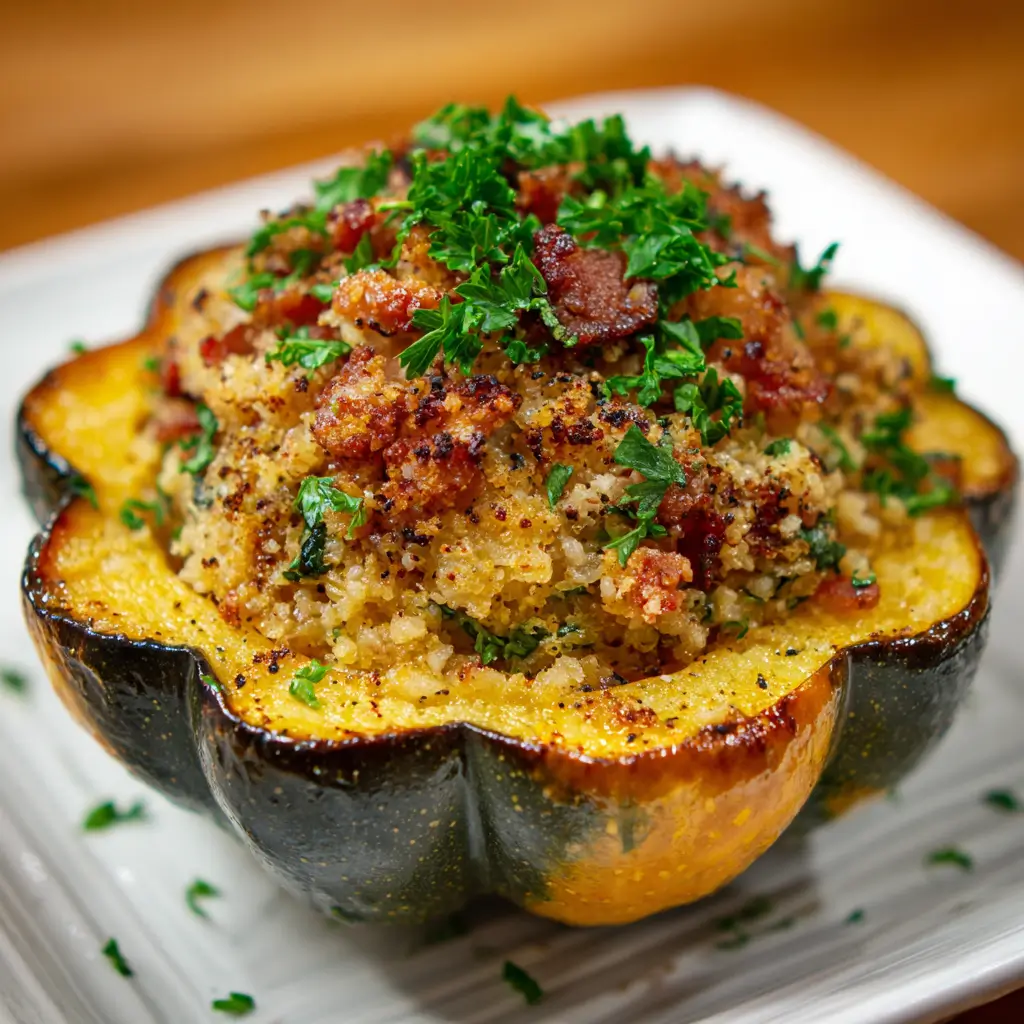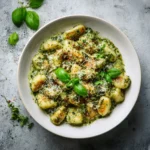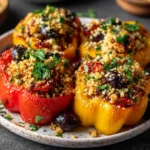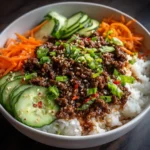Stuffed Acorn Squash: A Hearty, Healthy, and Flavorful Fall Favorite
When autumn rolls around, few dishes capture the essence of the season quite like stuffed acorn squash. This wholesome, naturally sweet winter squash becomes a culinary canvas when baked and filled with savory, aromatic ingredients that warm both the kitchen and the soul. Whether served as a main course for a cozy family dinner or as an elegant centerpiece at a holiday gathering, stuffed acorn squash is a dish that balances nutrition, flavor, and visual appeal. Packed with fiber, vitamins, and customizable fillings ranging from plant-based grains to protein-rich meats, this recipe offers something for everyone. In this comprehensive guide, we’ll explore everything you need to know about making the perfect stuffed acorn squash—from its historical roots to step-by-step instructions, variations, health benefits, and frequently asked questions.
The History of Stuffed Acorn Squash
Acorn squash (Cucurbita pepo var. turbinellus) has long been cultivated by Indigenous peoples of North America, particularly in regions spanning from present-day New England down through the Southeastern United States. Known for its hardy shell, ribbed texture, and slightly sweet, nutty flesh, acorn squash was traditionally roasted over open fires or stewed in earth ovens. Early Native American tribes such as the Iroquois, Cherokee, and Algonquin valued it not only as food but also for its storability during harsh winters.
With the arrival of European settlers, new cooking techniques and ingredients were introduced, blending Old World traditions with native crops. By the 19th century, recipes featuring hollowed-out squash filled with grains, meats, and herbs began appearing in American cookbooks. The concept of “stuffed vegetables” had already existed in Mediterranean and Middle Eastern cuisines for centuries—think dolma or stuffed peppers—but Americans adapted these ideas using locally abundant produce like pumpkins and squashes.
Acorn squash gained popularity in the early 20th century due to its ease of cultivation, versatility, and appealing appearance. It became especially prominent during Thanksgiving and Christmas meals as a vegetarian-friendly alternative to heavy meat dishes. Over time, modern interpretations have evolved to include quinoa, wild rice, sausage, kale, cranberries, pecans, and maple syrup glazes—reflecting diverse cultural influences and contemporary dietary preferences. Today, stuffed acorn squash stands as a symbol of seasonal eating, farm-to-table values, and creative home cooking.
Ingredients Breakdown: What Makes This Dish Shine?
The beauty of stuffed acorn squash lies in its balance of textures and flavors. Each ingredient plays a vital role in creating a harmonious, satisfying meal. Below is a detailed breakdown of the components typically used in a classic version, along with insights into their contributions:
- Acorn Squash: The star of the dish. Its tender, golden-orange flesh turns buttery when roasted, while the dark green skin provides structure and visual contrast. Acorn squash is naturally low in calories and high in vitamin C, potassium, and dietary fiber.
- Olive Oil: Used to coat the squash halves before roasting, olive oil enhances browning, adds richness, and helps seasonings adhere. Extra virgin olive oil contributes a subtle fruitiness that complements the squash’s sweetness.
- Kosher Salt & Black Pepper: Essential for seasoning. Salt brings out the natural sugars in the squash, while pepper adds a mild heat and depth.
- Uncooked Quinoa or Wild Rice: These whole grains form the base of the stuffing. Quinoa is a complete protein containing all nine essential amino acids, making it ideal for vegetarian and vegan diets. Wild rice adds chewiness and an earthy flavor profile.
- Vegetable or Chicken Broth: Cooking the grains in broth instead of water infuses them with savory notes. Vegetable broth keeps the dish plant-based; chicken broth deepens the umami taste if meat is included later.
- Onion and Garlic: Sautéed until translucent and fragrant, they build the aromatic foundation of the stuffing. Onions add sweetness when caramelized, while garlic imparts pungency and complexity.
- Fresh Mushrooms: Often cremini or button mushrooms are used for their meaty texture and ability to absorb surrounding flavors. They contribute umami and moisture, enhancing savoriness without adding animal products.
- Chopped Kale or Spinach: Leafy greens boost nutritional value with iron, calcium, and antioxidants. They wilt easily into the mixture, adding color and freshness.
- Dried Cranberries or Raisins: Provide bursts of tart-sweetness that contrast beautifully with the savory elements. Cranberries also introduce a festive touch perfect for holiday meals.
- Toasted Pecans or Walnuts: Add crunch and richness. Nuts contain healthy fats and help balance the overall mouthfeel of the soft, roasted squash and fluffy grains.
- Maple Syrup or Honey: A drizzle ties the filling together by amplifying the squash’s inherent sweetness. Pure maple syrup is preferred for its complex caramel-like notes.
- Ground Cinnamon or Nutmeg: Warm spices enhance the autumnal character of the dish. Just a pinch can elevate the entire flavor profile without overpowering.
- Grated Parmesan Cheese or Feta (optional): Adds saltiness and creaminess. Parmesan melts slightly into the stuffing, while feta crumbles offer tang. For dairy-free versions, nutritional yeast can be substituted.
- Ground Sage or Thyme: Herbs commonly associated with fall cooking, sage has a slightly peppery, camphorous note, while thyme is floral and woodsy—both pair exceptionally well with squash.
Step-by-Step Recipe: How to Make Perfect Stuffed Acorn Squash
Making stuffed acorn squash may seem involved, but the process is straightforward and rewarding. Follow these detailed steps for restaurant-quality results every time.
Ingredients
- 2 medium acorn squash (about 1.5 lbs each)
- 2 tablespoons olive oil, divided
- 1 teaspoon kosher salt, plus more to taste
- ½ teaspoon freshly ground black pepper
- 1 cup uncooked quinoa or wild rice blend
- 2 cups low-sodium vegetable or chicken broth
- 1 tablespoon coconut oil or butter
- 1 medium yellow onion, finely diced
- 3 cloves garlic, minced
- 8 oz cremini mushrooms, cleaned and chopped
- 2 cups chopped kale or baby spinach, stems removed
- ⅓ cup dried cranberries
- ¼ cup chopped pecans, toasted
- 1 tablespoon pure maple syrup
- 1 teaspoon dried thyme (or 1 tbsp fresh)
- ½ teaspoon ground cinnamon
- ¼ teaspoon ground nutmeg
- ½ cup grated Parmesan cheese (optional)
- Fresh parsley, chopped (for garnish)
Directions
- Preheat Oven: Begin by preheating your oven to 400°F (200°C). Line a large baking sheet with parchment paper or lightly grease it to prevent sticking.
- Prepare the Squash: Wash the acorn squash thoroughly under running water. Using a sharp chef’s knife, carefully cut each squash in half from stem to blossom end. Use a sturdy spoon to scoop out the seeds and stringy pulp from the center cavities. Discard the seeds or save them for roasting separately.
- Season and Roast: Place the squash halves cut-side up on the prepared baking sheet. Drizzle each half with ½ tablespoon of olive oil and rub it evenly over the surface. Sprinkle with ½ teaspoon salt and a few grinds of black pepper. Roast in the preheated oven for 30–35 minutes, or until the flesh is fork-tender but still holds its shape. Remove from oven and set aside. Reduce oven temperature to 375°F (190°C) for the next phase.
- Cook the Grain: While the squash is roasting, rinse the quinoa under cold water to remove saponins (which can cause bitterness). In a medium saucepan, combine quinoa and broth. Bring to a boil, then reduce heat to low, cover, and simmer for 15 minutes, or until liquid is absorbed and quinoa is fluffy. Fluff with a fork and set aside. (If using wild rice, follow package instructions as cooking times vary.)
- Sauté the Aromatics: In a large skillet over medium heat, melt coconut oil or butter. Add diced onion and sauté for 5–6 minutes until softened and beginning to caramelize. Stir in minced garlic and cook for another 30 seconds until fragrant.
- Add Mushrooms and Greens: Increase heat to medium-high and add chopped mushrooms. Cook for 6–8 minutes, stirring occasionally, until mushrooms release their moisture and begin to brown. Stir in kale or spinach in batches, allowing each addition to wilt before adding more. Cook until fully incorporated and no excess liquid remains.
- Combine the Filling: In a large mixing bowl, combine cooked quinoa, sautéed vegetables, dried cranberries, toasted pecans, maple syrup, thyme, cinnamon, nutmeg, and Parmesan (if using). Mix thoroughly. Taste and adjust seasoning with additional salt, pepper, or maple syrup as needed.
- Stuff the Squash: Carefully take the roasted squash halves and gently press down on the centers if needed to create more space. Spoon the filling generously into each cavity, mounding it slightly. Drizzle any remaining pan juices from the squash over the tops.
- Final Bake: Return the stuffed squash to the oven (now at 375°F) and bake for an additional 15–20 minutes. This allows the flavors to meld and the top of the stuffing to become lightly crisp.
- Garnish and Serve: Remove from oven and let rest for 5 minutes. Garnish with chopped fresh parsley and serve warm. For extra indulgence, add a final drizzle of maple syrup or a sprinkle of flaky sea salt.
Tips for Success
- Choose Uniform Squash: Pick similarly sized acorn squash so they roast evenly. Look for ones with firm, unblemished skins and a deep green color with hints of orange where they rested on the ground.
- Don’t Over-Roast Initially: When roasting the empty halves, stop just before they’re completely soft—they’ll finish cooking once stuffed and returned to the oven.
- Toast Your Nuts: Toasting pecans or walnuts in a dry skillet over medium heat for 3–5 minutes intensifies their flavor and adds crunch. Watch closely to avoid burning.
- Bulk Up the Protein: For a heartier meal, mix in crumbled cooked sausage, ground turkey, or lentils into the stuffing.
- Make Ahead: You can roast the squash and prepare the filling up to two days in advance. Store separately in airtight containers in the refrigerator. Assemble and reheat before serving.
- Freezing Instructions: Fully assembled stuffed squash can be frozen before the final bake. Wrap tightly in foil and freeze for up to 3 months. Thaw overnight in the fridge and bake as directed, adding 10–15 minutes to the cooking time.
- Use Leftovers Creatively: Extra stuffing makes a great grain bowl base. Serve over greens with roasted vegetables or use as a side dish.
Variations and Customizations
One of the greatest strengths of stuffed acorn squash is its adaptability. Here are some popular twists to suit different tastes and dietary needs:
- Vegan Version: Omit cheese and use nutritional yeast for a cheesy flavor. Ensure broth is vegan-certified.
- Gluten-Free: Naturally gluten-free, just verify that your broth and other packaged ingredients are certified GF.
- Low-Carb/Keto: Replace quinoa with cauliflower rice. Boost fat content with avocado, olive oil, or goat cheese.
- Mediterranean Style: Use bulgur wheat or farro, add sun-dried tomatoes, olives, artichoke hearts, and crumbled feta. Season with oregano and lemon zest.
- Tex-Mex Inspired: Swap quinoa for brown rice, add black beans, corn, cumin, chili powder, and top with avocado and cilantro.
- Breakfast Stuffed Squash: Fill with scrambled eggs, sautéed onions, bell peppers, and cheddar cheese. Bake until eggs are set.
- Dessert Version: For a sweet twist, stuff with a mixture of apples, raisins, oats, cinnamon, nutmeg, and maple syrup. Top with a streusel made from flour, butter, and brown sugar.
- Seafood Option: Fold flaked salmon or crab meat into the stuffing for an elegant entrée. Add dill and lemon juice for brightness.
Health Considerations and Nutritional Value
Stuffed acorn squash isn’t just delicious—it’s also a nutrient-dense meal that supports overall wellness. Here’s a closer look at its health benefits:
- Rich in Fiber: Acorn squash contains about 9 grams of fiber per cup, promoting digestive health, stabilizing blood sugar, and increasing satiety.
- High in Antioxidants: Beta-carotene (converted to vitamin A), vitamin C, and various phytonutrients combat oxidative stress and support immune function.
- Heart-Healthy Fats: Olive oil and nuts provide monounsaturated and polyunsaturated fats, which help lower LDL (“bad”) cholesterol levels.
- Good Source of Plant-Based Protein: Quinoa and legumes (if added) supply essential amino acids necessary for muscle repair and hormone production.
- Low Glycemic Index: Despite its sweetness, acorn squash has a moderate impact on blood glucose, especially when paired with protein and healthy fats.
- Potassium Powerhouse: With over 800 mg per cup, acorn squash helps regulate blood pressure and fluid balance.
- Ideal for Weight Management: High volume, low calorie density, and rich in nutrients make this dish excellent for those looking to maintain or lose weight without feeling deprived.
- Suitable for Diabetics (in moderation): Portion control is key. Pairing with lean proteins and avoiding excessive added sugars ensures balanced meals.
Nutritional estimate per serving (one stuffed half, based on quinoa, vegetables, and nuts):
- Calories: ~380
- Protein: 12g
- Fat: 18g (mostly unsaturated)
- Carbohydrates: 50g
- Fiber: 10g
- Sugars: 15g (naturally occurring)
- Sodium: 450mg (varies with broth and added salt)
- Vitamin A: 120% DV
- Vitamin C: 60% DV
- Potassium: 35% DV
Frequently Asked Questions (FAQ)
Can I microwave the squash instead of roasting it?
Yes, though roasting yields better flavor and texture. To microwave, place halved squash cut-side down in a microwave-safe dish with ¼ cup water. Cover and cook on high for 8–10 minutes, or until tender.
What can I do with the seeds?
Like pumpkin seeds, acorn squash seeds are edible! Clean them, toss with oil and salt, and roast at 325°F for 15–20 minutes until crisp. Great for snacking or topping salads.
Is acorn squash healthier than butternut squash?
Both are nutritious. Acorn squash has slightly more fiber and potassium; butternut has more vitamin A. Both are excellent choices depending on your preference.
Can I use instant quinoa?
Yes, but regular quinoa has a better texture and fewer additives. If using instant, reduce cooking time and liquid slightly.
How do I store leftovers?
Cool completely and refrigerate in airtight containers for up to 4 days. Reheat in the oven at 350°F for best results, or microwave for convenience.
Can I make this ahead for Thanksgiving?
Absolutely! Roast squash and prepare filling 1–2 days in advance. Assemble and bake the day of serving for optimal freshness.
Why did my stuffing come out soggy?
This usually happens if the squash released too much moisture or the filling wasn’t sautéed long enough. Try roasting squash cut-side down initially or draining excess liquid from sautéed veggies.
Are there lower-calorie substitutions?
Reduce nuts and cheese, increase leafy greens, and use less oil. Opt for water instead of oil when sautéing, or use non-stick spray.
Summary
Stuffed acorn squash is a nourishing, flavorful, and visually stunning dish that celebrates the bounty of fall. With endless customization options and robust nutritional benefits, it’s a must-have in any seasonal recipe collection.
From preparation to presentation, this versatile recipe satisfies vegetarians, meat-eaters, and health-conscious diners alike—making it a true kitchen staple year after year.










